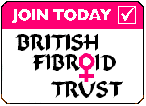Myolysis & Cryomyolysis, at the time of writing, are not approved by National Institute of Excellence (NICE) and are still experimental.
- This technique involves the use of bipolar or unipolar electrical pulse or laser through a needle/probe to coagulate (clot) (i.e. to disrupt) the blood flow of the fibroids which causes them to shrink over time and eventually die (necrosis).
When liquid nitrogen is used instead of laser or electrical current, it is called cryomyolysis.
- Suitable for small fibroids which are less than about 4 inches (10 centimeters) or the uterus is no more than that of a 14-week pregnancy.
- Only suitable for women who no longer want to have children.
- Long-term studies are required to determine whether myolysis is an effective alternative to myomectomy.
-
There are some risks/complications associated with myolysis (see Table below).
| Summary: Risks/Complications |
| Infection. |
| Frequent failure to resolve the symptoms of abnormal bleeding, pain which subsequently may require additional surgery, usually hysterectomy. |
| Pelvic adhesion. |
| Adverse reactions to anaesthetics. |
| Large portion of the womb muscle may be destroyed or scars, consequently, if you fall pregnant afterwards, there may be serious complications including rupture of the uterus. |
What happens BEFORE the procedure?
A few weeks before the procedure, your gynaecologist prescribes you medicine that thins the lining of the womb and reduces its blood supply.
It can be, for example, Danazol, oral drug. Or months before, you may be prescribed injection called gonadotropin-releasing hormone (GnRHa), e.g. Zoladex, to shrink fibroids and reduce blood flow to the uterus.
As a routine, on the day, a pregnancy test is carried out.
What happens DURING the procedure?
- Under general anaesthetics, the surgeon first makes small incisions in your lower abdomen and inserts carbon dioxide gas to inflate your abdomen.
- The surgeon then inserts the probe into the fibroid through the laparoscope.
- Laser or high frequency electrical current is applied. This is repeated several times at different locations inside each fibroid until it is deemed to be sufficient to cause necrosis (destruction of the fibroids).
- The burning process takes less than 4 mins for microwaves techniques and 10-15 mins for other techniques.
The process takes approx 1 hour.
What happens AFTER the procedure?
- You are kept for observations for a few hours.
- Hospital discharge: same day.
- You may experience pain, tenderness or cramping in the abdominal area which can be resolved with pain killers.
- Avoid using tampons. Use sanitary pads for at least in the first week.
- Do NOT have sexual intercourse for 1 week.
- Avoid strenuous activity in the first week.
- It is advisable to have a few days off work.
- Contact the emergency department immediately if you develop heavy bleeding, severe and increased abdominal pain or fever.
|
 Woman2Woman Fibroid Support
Woman2Woman Fibroid Support


